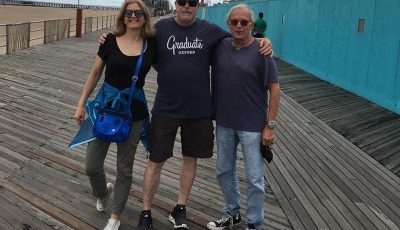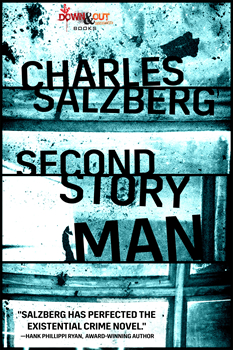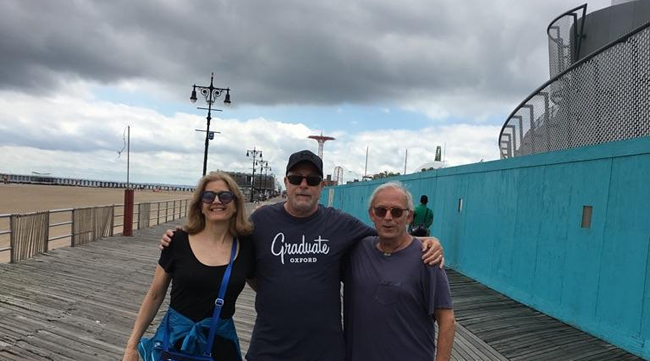

Inside Creativity: The Role of Spontaneity
There are two kinds of writers. Those who meticulously outline and know exactly where they’re going, and those who prefer to live in the moment and don’t outline at all. I am one of the latter.
There are several reasons why I prefer working this way, laziness certainly being one of them—why spend all that time and energy outlining when I could be actually writing the book? But the most important reason is that I fear if I know where I’m going and how I’m getting there, it would stifle spontaneity and creativity and my work would become stale and predictable. I like to take chances. I like being challenged by that blank page, not knowing what’s going to happen next. And I believe taking those chances makes me a better writer.
Devil in the Hole was based on a true crime. A New Jersey man murdered his wife, three teenage children, mother, the family dog, then disappeared. When this story first hit the news several decades ago, I had just begun my career as a magazine journalist, but I knew enough to recognize a good story when I saw one. It wasn’t the crime itself that fascinated me. I was more interested in the motivation and the planning that went into it. I could understand a crime of passion, or someone suddenly snapping and going into a murderous spree— it happens all too often. But this was different. This was so exceedingly well-planned that the authorities didn’t find the bodies for almost a month, because the murderer had stopped both mail and newspaper deliveries, as well as calling the school and alerting them that the kids would be away visiting relatives for several months.
I began to pitch the story first as a magazine article then as a book. But there was a big problem: the murderer had disappeared and was still at large. There were no answers as to why he did it nor where he was hiding and I was told that without an “ending” there was no book. But the story haunted me. I sat with it for years, fascinated not by the crime itself but how the murders affected those it touched.
My first decision was how to tell the story. Would it be told by an omniscient third-person narrator? Would it be first person, perhaps told by the murderer himself or someone investigating the crime? Neither of those seemed right, but something else did. Since I was a journalist, why not construct the novel as if I were researching a book? That meant the main character would be an unseen, unnamed journalist doing the interviewing.
As a result, the novel is constructed as a string of first person accounts by people who knew the murderer, or meet along his escape route. Each narrator moves the story forward, while revealing something essential either about the crime or the murderer himself, until ultimately the reader has the answer as to why the murders were committed.
I had no master list of characters before I began with a nosy neighbor who calls in his suspicions of something strange going on at the house across the street. This led to a pair of cops who answer the call. Subsequent characters range from a state investigator (who reappears many times to pick up the story), a mistress, the murderer’s sister, a mailman, co-worker, a prostitute, a child, and a runaway teenager.
The novel was fueled solely on instinct. I’d end a chapter and think, “Okay, who would he run into next?” Or, “Who could shed light on how this man developed into a murderer?”
When I finished, agents and editors said there were too many voices which would only confuse readers. I was told nobody would publish it. Fortunately, that was wrong. Not only was it published, but it was named one of the best crime novels of 2013 by Suspense Magazine and many reviewers applauded the way it was constructed.
Instinct also played a major part in my latest novel, Second Story Man. Francis Hoyt is a master burglar, who believes he’s the best in the business. He’s pursued by Charlie Floyd, a recently retired Connecticut state investigator, and Manny Perez, a Cuban-American Miami police detective. When the arrogant Hoyt learns the two men are after him, he sees it as an opportunity to prove just how good he is by daring them to bring him down.
The story is told from the three points-of-view, with each chapter moving the story forward. When I’d finish a chapter, I never quite knew which of the three would pick up the story until I typed the character’s name at the top of the page. And until I got to the final page, I had no idea how the novel would end.
At one point, Hoyt, enjoying the cat-and-mouse game as well as the opportunity to show that he’s the best at what he does, ratchets up the stakes by showing up unannounced at Charlie Floyd’s house to taunt the two lawmen.
Every writer knows that after spending so much time with characters, they begin to take on a life of their own. You don’t tell them what to do, they tell you. This is exactly what happened. Just as I had Hoyt out the door I realized there was no way he’d ever leave that house without making some sort of grand gesture to prove how good he was. He’s a thief, so he’d steal something right from under the noses of Floyd and Perez. In this case, it was a valuable antique silver ashtray.
This was an unplanned, last-minute addition, and I had no idea how or even if it would play into the rest of the story. But as I got closer to the end, I realized Hoyt’s compulsive act would wind up playing an important part in the ending of the novel.
For me, writing is much more fun if it’s an adventure, a journey taken without knowing exactly what my destination is or how I’m going to get there. I just know the direction in which I’m traveling. I trust that if I’m on the right track the story will somehow magically reveal itself.
- Inside Creativity: The Role of Spontaneity - January 31, 2018
- Off the Page: Rick Pullen - December 31, 2017



